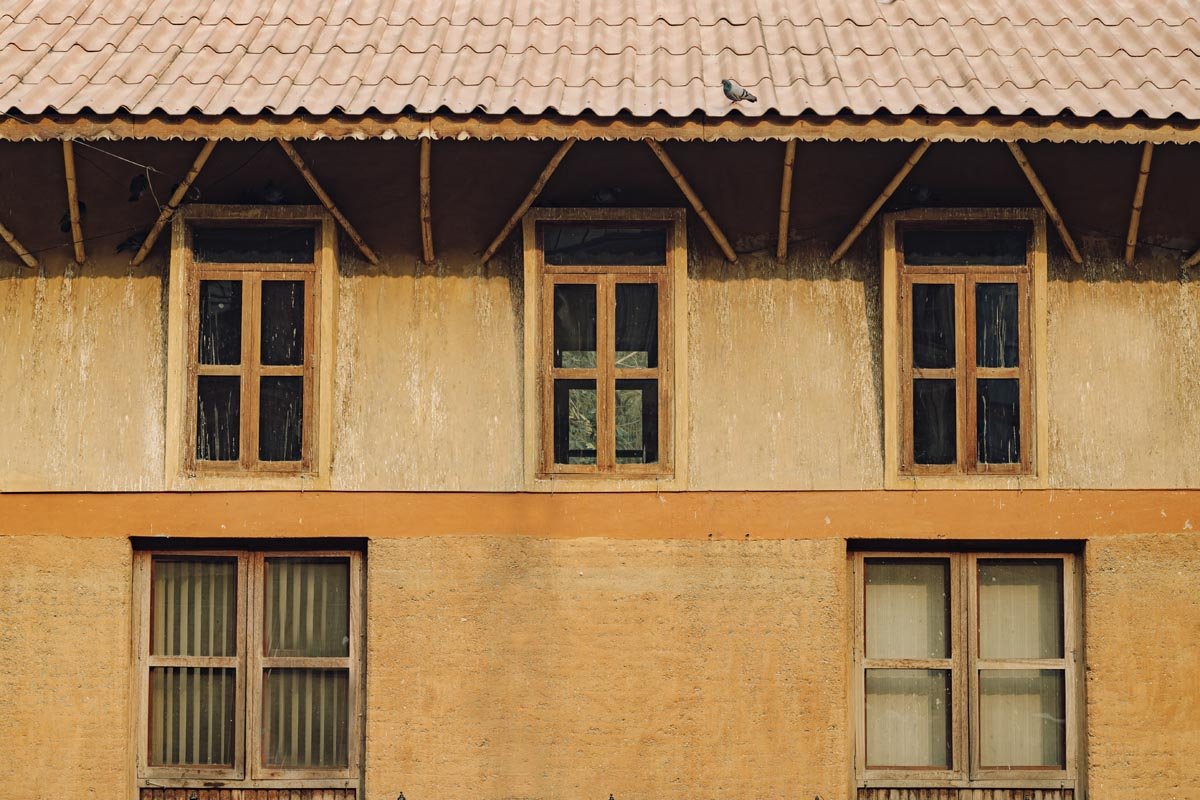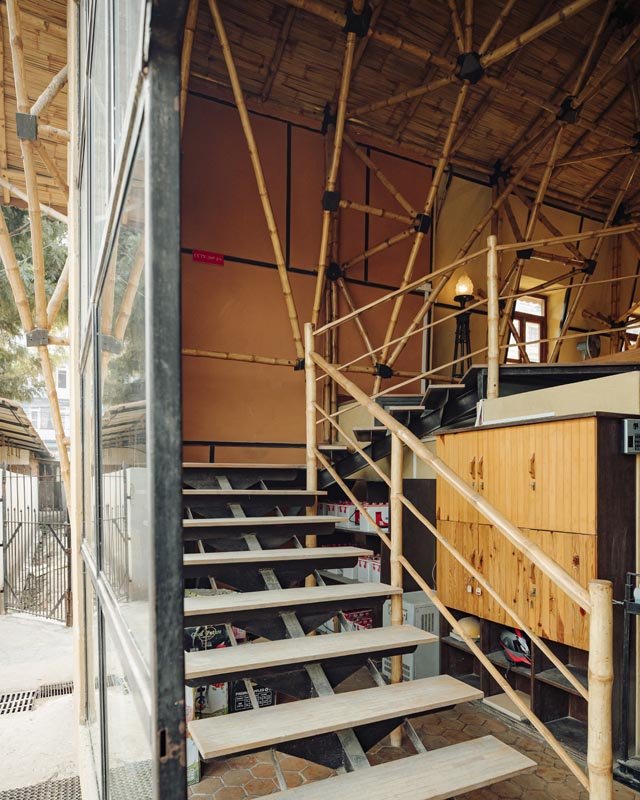Project: Madan Puraskar Pustakalaya (MPP)
Designers: Nripal Adhikary, Kamal Maharjan, Pranathi, Karit Maharjan
Location: Patan Dhaka, Patan
Area: 2700 Sft.
Built: 2015. Duration to build 9 months.
Materials: Rammed Earth, Wattle and Daub, Bamboo, Timber and Glass
Rebuilding after the earthquake in style.
2015 Gorkha Earthquake damaged an old library which held the largest archive of Nepali literature and a wide range of historic books and documents. Most of the buildings in Kathmandu had cracked, people were scared of anything concrete. A school we had built with stone and bamboo at the epicenter had survived the major tremor; all of a sudden there was a new love-affair for this old neglected material. Bamboo is an ideal material because it is light weight and ductile, always springing back to shape after a tremor. Bamboo, however, had an image issue as it was associated with poor man’s habitat.
MPP was the first large scale public building to be built with bamboo and earth. And that too, in the heart of historic city of Patan. ABARI celebrated bamboo by exposing a large scale intricate spider web like gothic arch underneath which lay hundreds of thousands of old manuscripts. Light weight earthen walls would breathe creating a perfect environment to protect the old documents. This building has been transformational in its treatment of traditional materials and is now a tourist attraction.
April 25, 2015 has been engraved in the minds of thousands of people directly or indirectly affected by the earthquake in Nepal. The second biggest loss after loss of life that was recorded was property. Several architectural marvels were devastated and traditional homes crumbled. Only a few could withstand and that too only to later realize the invisible damage that had been done to them.Madan Puraskar Pustakalaya (MPP), a public building of library and archives, was one such deceptive structure which continued to stand post earthquake. “Our original structure made up of brick, mud mortar and lime mortar with some steel beams, was weakened by the earthquake,” explains Kanak Mani Dixit, member secretary of the MPP. “We were advised by the structural engineers that the structure wasn’t viable and was structurally weak and so we pulled it down.”Since the MPP is a repository of over 40,000 books of historical importance for the country and is the only archive of the Nepali world in and beyond Nepal, it was important to choose materials which will be most appropriate. Kamal Maharjan, project architect, ABARI, adds, “We decided to use vernacular style of architecture and largely used locally available and indigenous bamboo resource and mud tiles.” “Bamboo has unique properties making it extremely versatile and thus a preferred resource in construction, it is due to these range of properties that bamboo is also considered highly safe in buildings lying in high seismic zone,” says Mahajan.“Bamboo has not been used enough in architecture in Nepal, particularly with some modern day innovations, so we did this,” explains Mahajan. The finished structure is expected to spark innovation and give boost to a new industry in Nepal.
Objectives of the MPP Project:
Design and construct a national archive to house more than 35,000 books, 50,000 rare photographs, 5,000 ephemera, over 10,000 manuscripts and various other audiovisuals.
Create an example for post-earthquake reconstruction by building a secure archive using local and natural materials.
Preserve the history and grandeur of the library by using salvaged materials from the destroyed building.
Read more about the project on Desigboom.
Related Blogs


















































It has been a roller-coaster journey after the earthquake, and we are proud to have effectively collaborated with many local communities, young professionals, urban youth, policy makers and international groups in our post-earthquake activities.